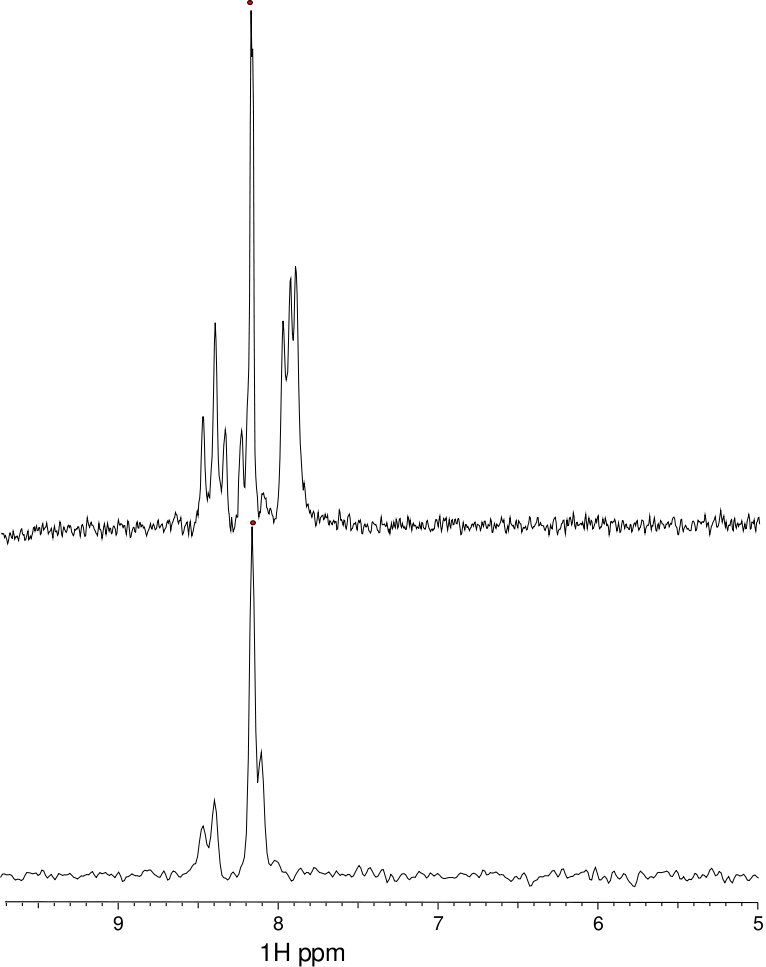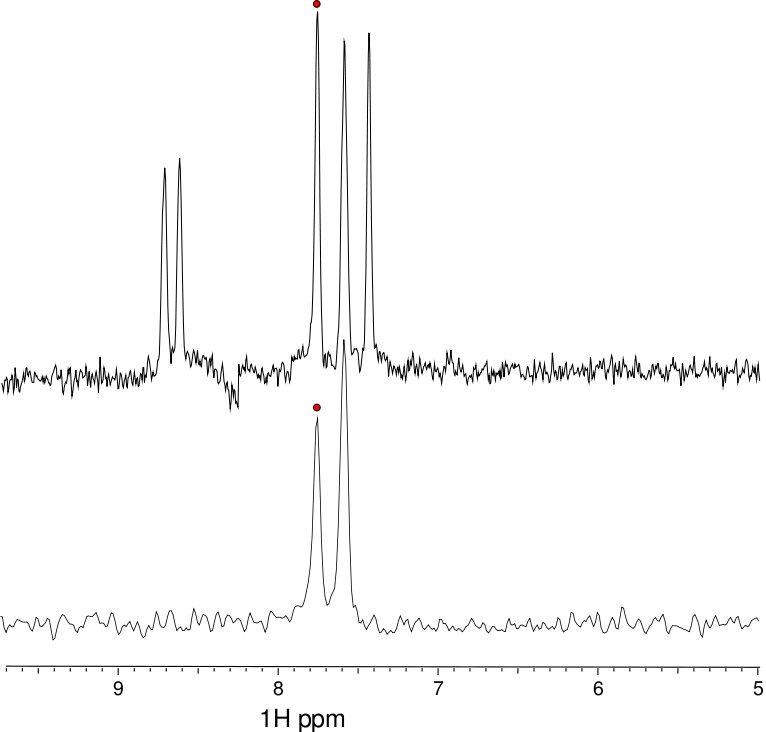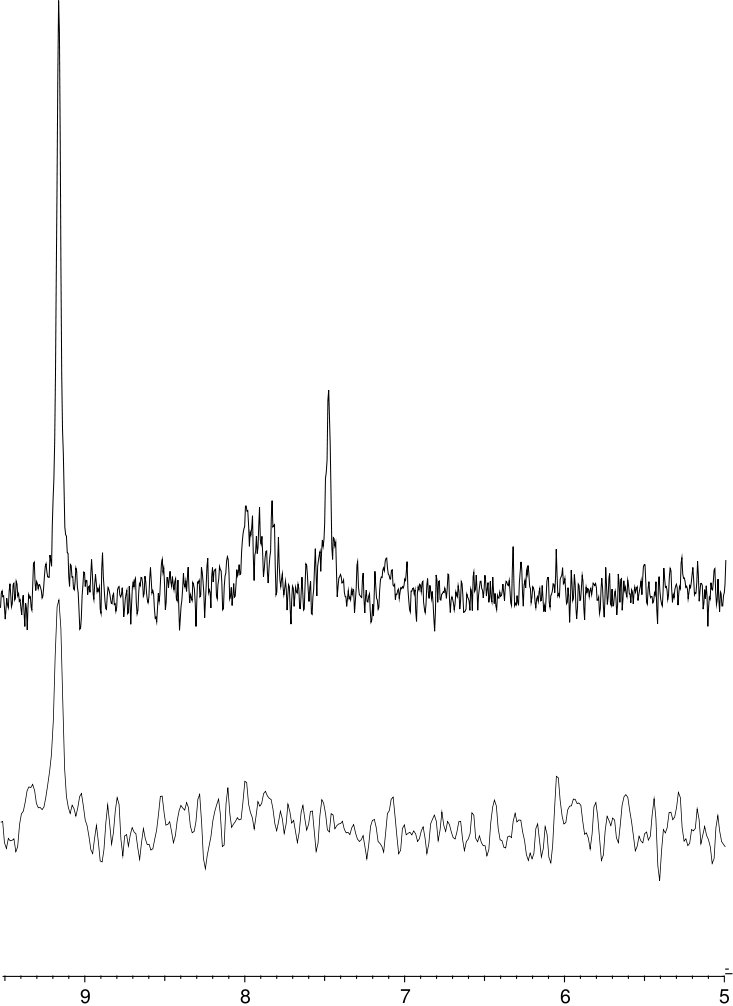|
I`m new on Pipe. I was using the values from pipe to estimate R1 and R2. Because lots of signal in the HSQC were crowded we decided to do a series of HNCO spectra in order to improve the resolution. We were expecting to lose sensitivity because we expected a worse signal to noise ratio, but the data obtained from the 3D spectra seems to have 2 times the signal to noise ratio of the 2D spectra. Then we looked the FT of the peak max at the 2 spectrum and tried to take the nise to the same level and the signal from the 3D spectra was clearly lower than the same at 2D, so I am looking forward for someone who can explain this. Thanks All the peaks were selected using IPAP and then autoFit. I could not upload the image with the FT because of low karma. |
|
I`ll try to be clearer this time with 3 examples. The noise estimated with nnmPipe was always close to DHeight, so we calculated signal to noise ratio using Height and Dheight. These are the values that we obtained with pipe (Residue,Height,Dheight, signal to noise): 2D spectra (F, +7.323573e+06, +2.300019e+05,31 ) (R, +1.553741e+07, +2.301053e+05, 67) (V, +3.386924e+07, +2.436932e+05, 141) 3D spectra (F,+6.252759e+06, +1.445287e+05, 44) (R, +1.244735e+07, +1.439922e+05, 88) (V, +3.077343e+07, +1.400301e+05, 219) We found strange the fact that the 3D spectra has a signal to noise ratio larger than the one of the 2D spectra, so we plotted the strips of the 2 spectrum corresponding to the same pair NH (images: top: 2D strip, bottom: 3D strip) and thought that the signal to noise ratio should be lower in the 3D spectra. So we would like to know if someone know how pipe estimate Height and Dheight. Thanks |
|
That you have better S/N in HNCO can be explained by that 3D experiment effectively has very many scans. The peak intensity adds up from all the increments in all dimensions. Of course not all increments are equal in contributing to the peak, those with longer evolution times will probably contribute less. Also, more increments up until digital resolution approaches the natural line width will increase peak height (relative to noise) significantly, because line will be gradually narrowing. |








Hi, Marcos. You should be able to upload image now. Please note that posts can be edited too. - Evgeny Fadeev (Jul 01 '10 at 19:45)
I'm not sure I understand the second part of your question - "ft of the peak max and take noise at the same level" - could you clarify? - Evgeny Fadeev (Jul 01 '10 at 20:21)